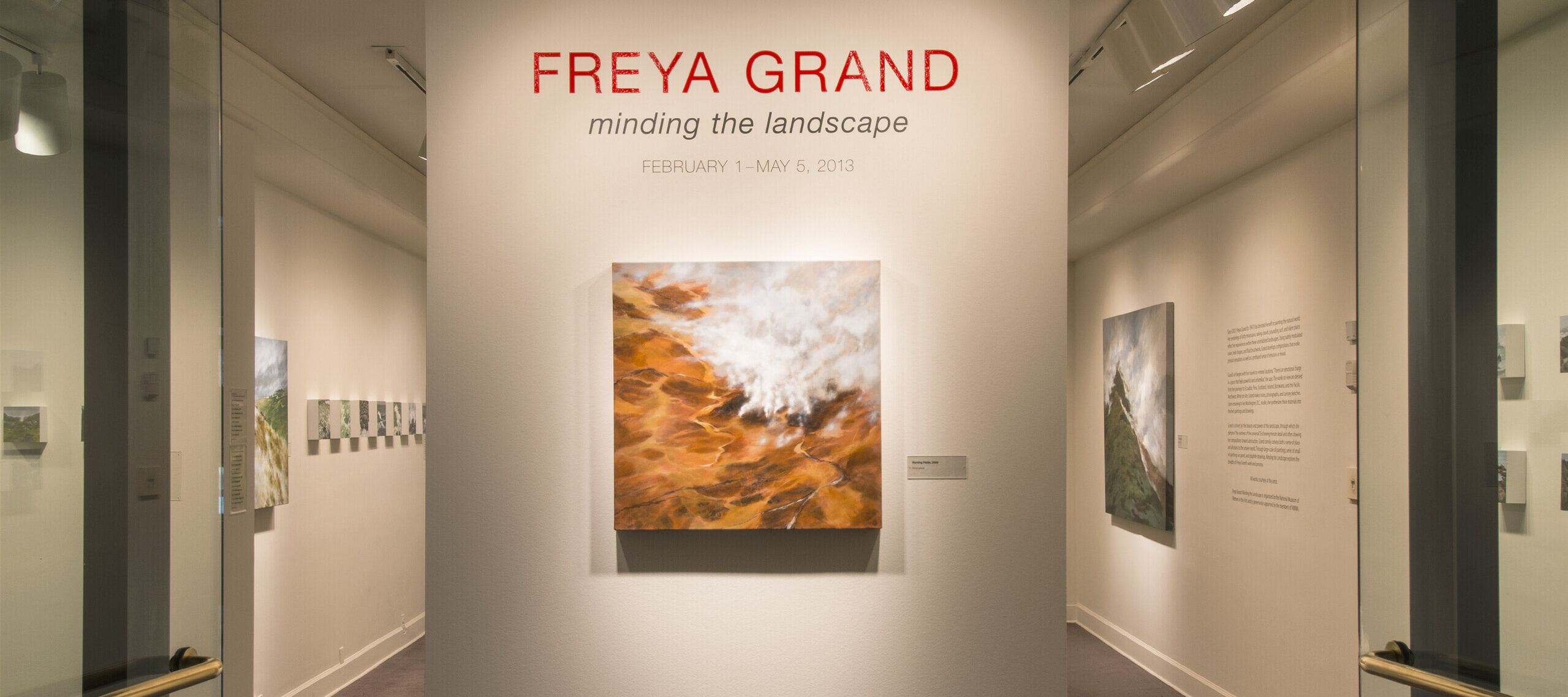(This is Part 1 of a series on Freya Grand—click here for Part 2.)
At her recent artist’s talk, Freya Grand discussed her process of creating the inspiring works currently on display at NMWA. Emphasizing her travels to remote and wild places, she related her habit of documenting what she sees with photographs and small sketches on site, even creating watercolors if weather permits, and then taking all that back to her studio in Washington, D.C. Her head full of images of what she has seen, the artist proceeds to get those visual memories out onto paper in exquisite graphite studies for her paintings.

With each step of the process, Grand separates out the details, the accidental human or animal appearance in the scene, and focuses on the earth, the air, the water, and the fire—the elements, as it were, that underlie her subjects. The exhibition’s title gives us a hint here. Grand’s work is so compelling because it is not descriptive in the ordinary sense. These paintings are not an imitation of nature, but a re-creation of experience achieved from mind to hand to canvas in a process that is in many ways reminiscent not only of the great Romantic painters of the 19th century, but going back further, to the example and the concepts of Leonardo da Vinci.

The first word that probably comes to mind when looking at Grand’s landscapes is “sublime.” Like many, I have noted connections with painters like J.M.W. Turner or Caspar David Friedrich, artists who tried to find ways to manifest 18th-century philosopher Edmund Burke’s ideas concerning the notion of the sublime in actual works of art. The sublime is an experience that involves the element of fear, something beyond the merely beautiful or picturesque because of that fact. It is something that most people have experienced in nature, for example while standing on the edge of a rocky cliff, feeling simultaneously exhilarated and overwhelmed at the greatness of what is in front of us, but feeling the fear of its danger at the same time.
Such experiences inspire Grand on her explorations into nature, and it is why her works are so moving and contemplative for most viewers. Her work completely conveys the sense of the experience of the artist confronting the natural scenes that are captured in both small and large paintings in this exhibition. Precisely because they are not specific, and that they often defy an understanding of scale, beyond admiration they provoke memories of such things in the viewer of his/her own moments of the sublime. The first time I saw Grand’s work, these rushed in on my mind, and kept me looking, and thinking, for a long time.
